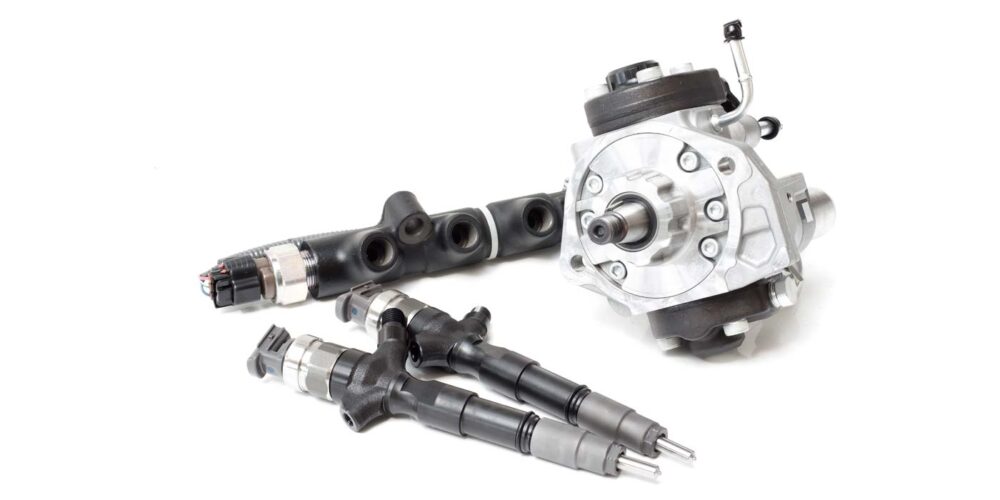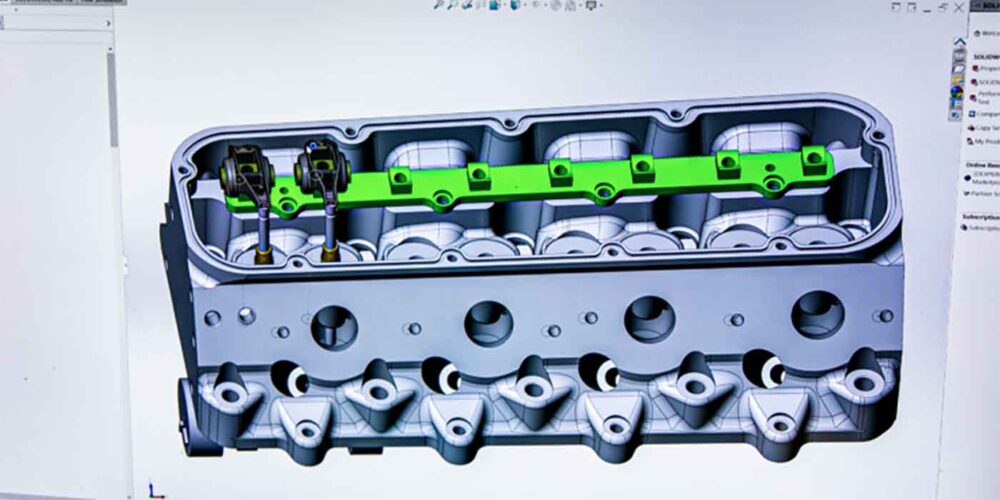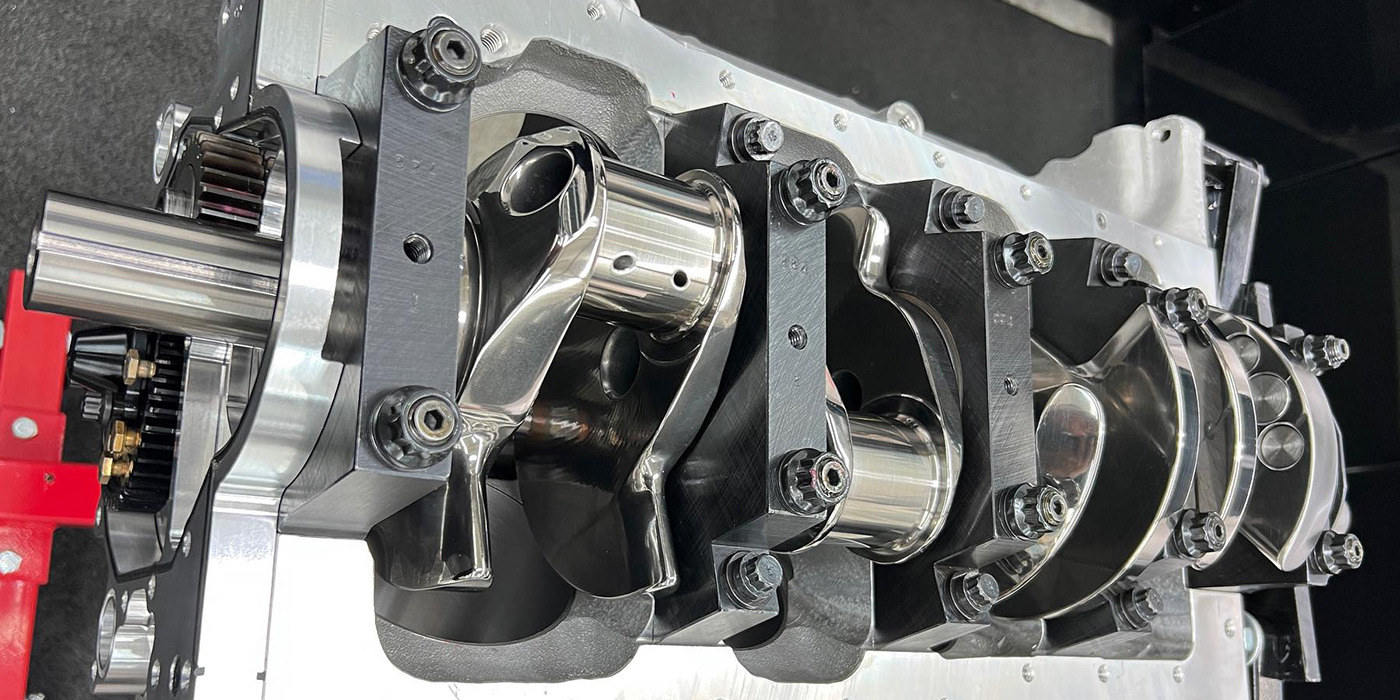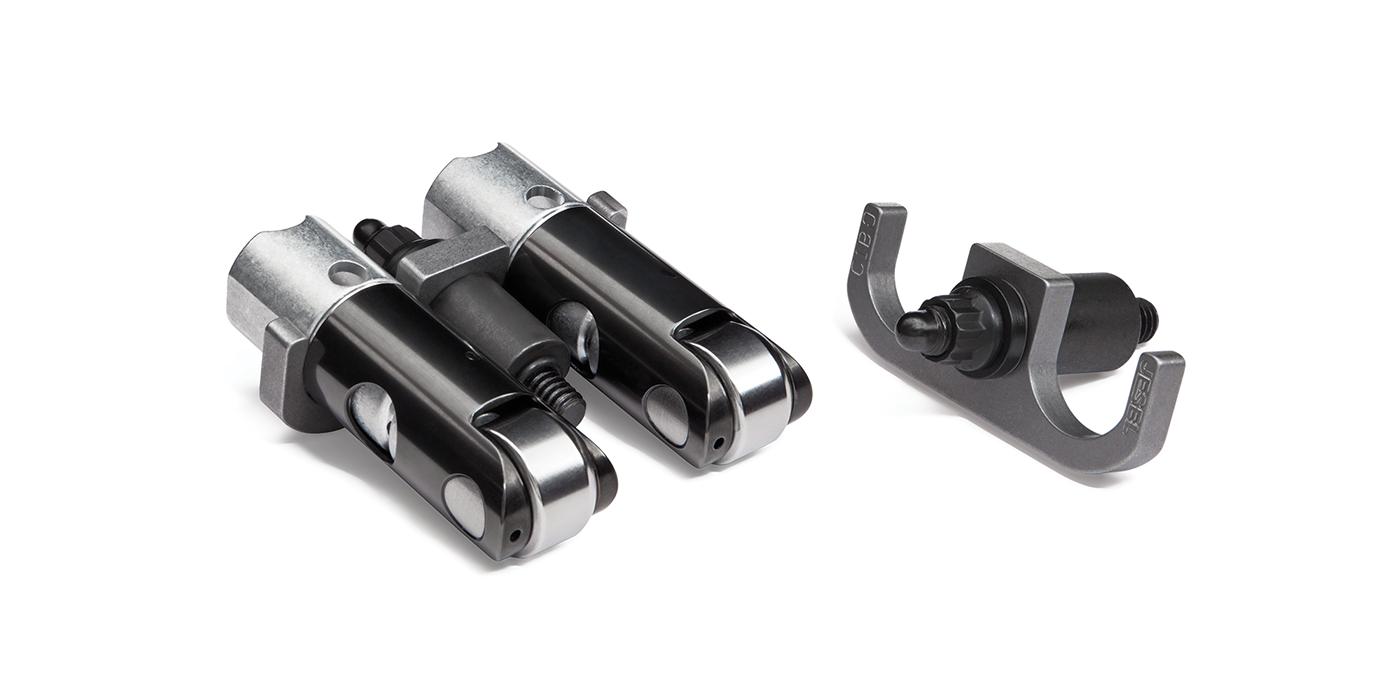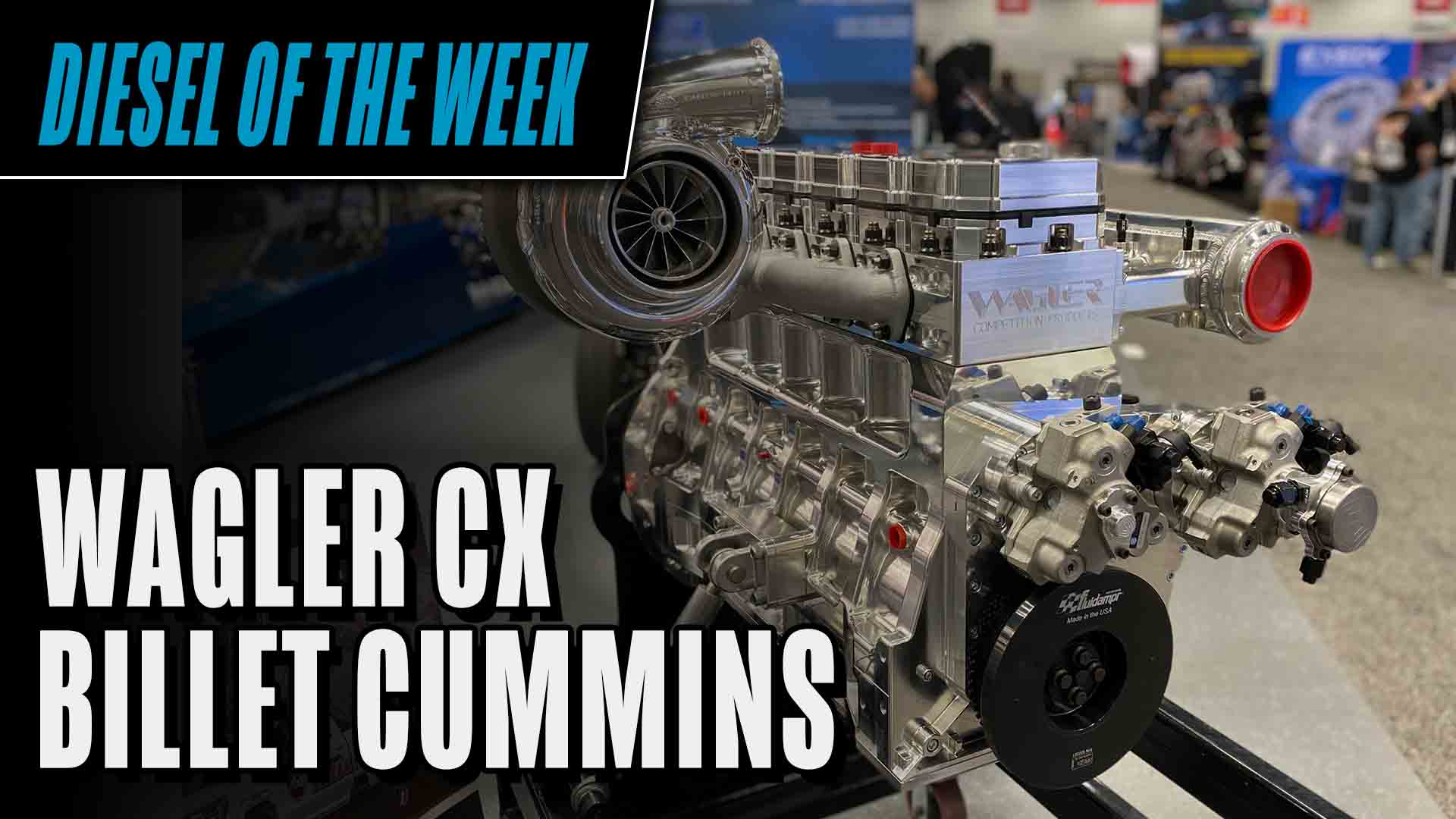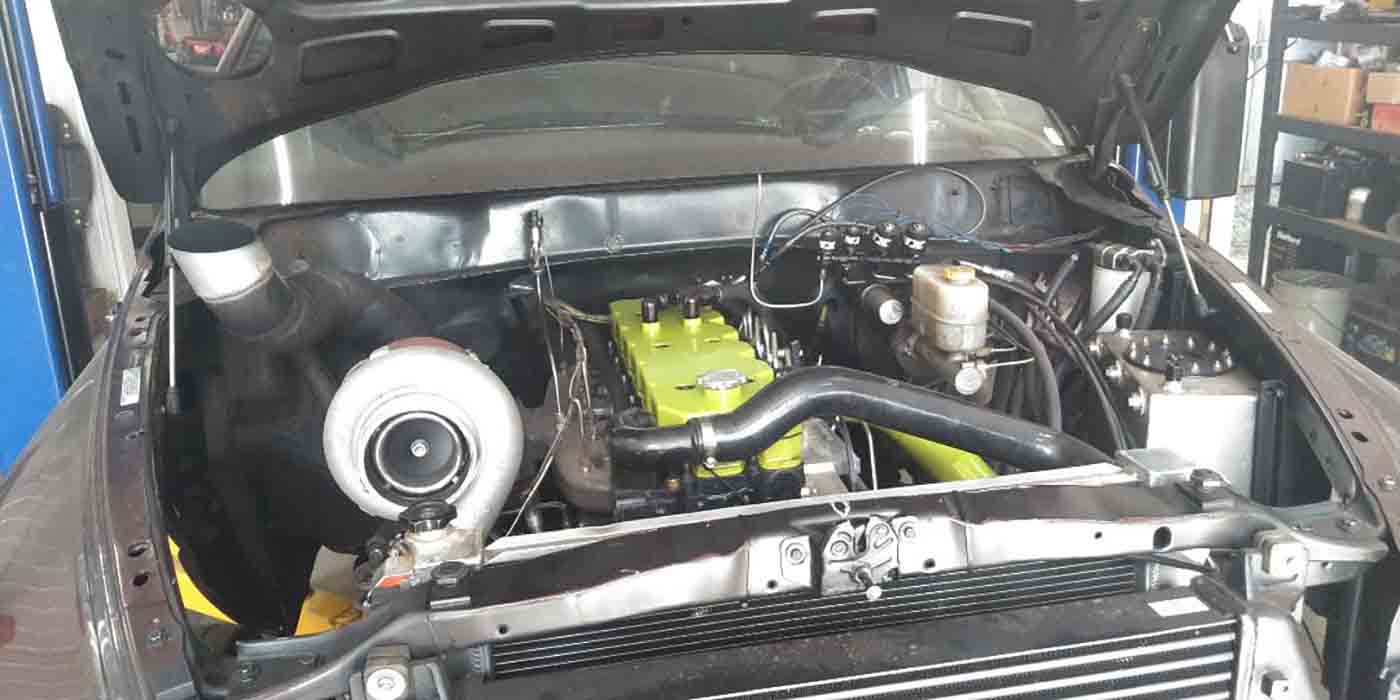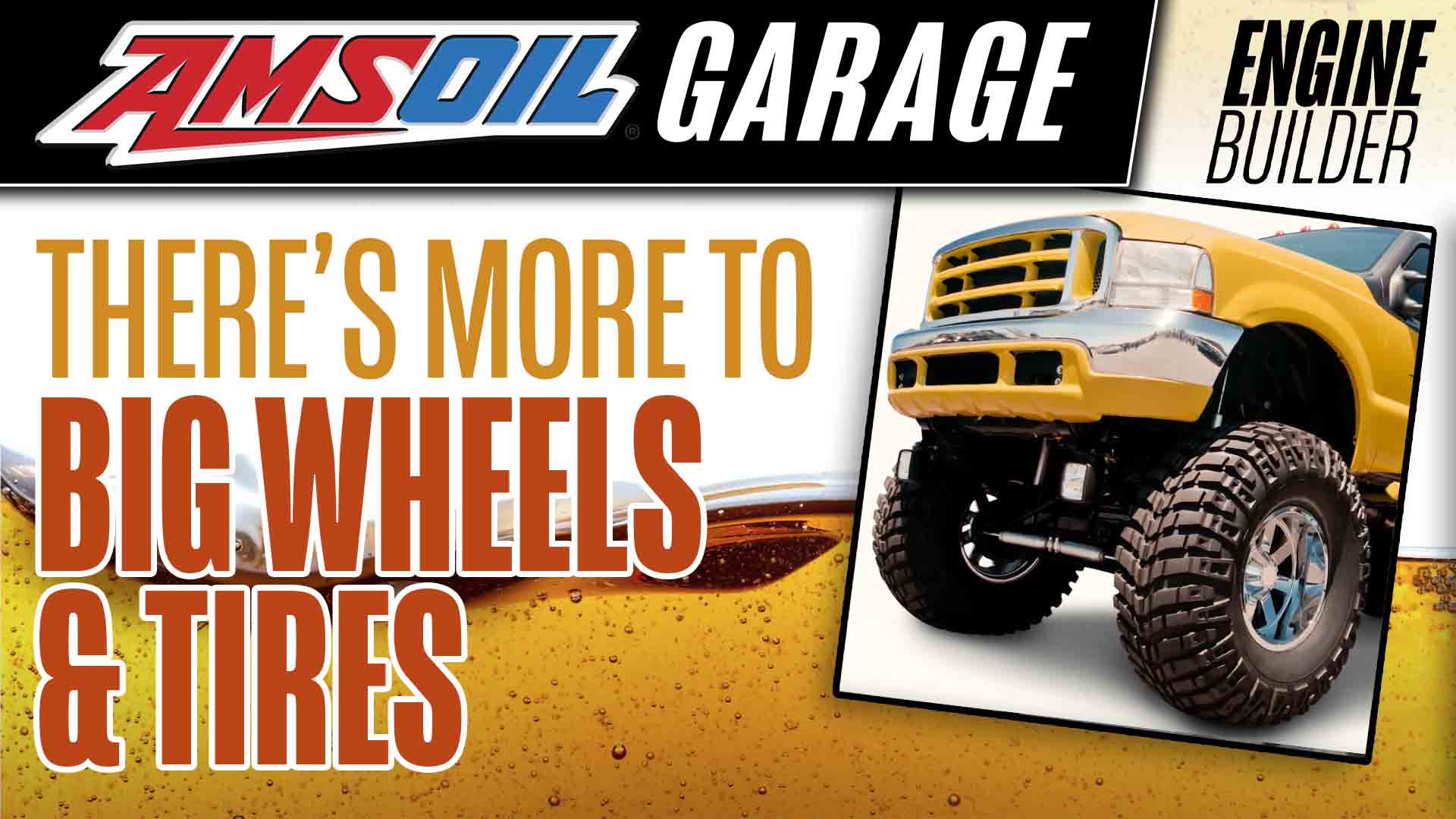Every time I speak with a diesel truck owner, race team, or engine builder about their diesel engine’s fuel setup, inevitably we get to the specifics of the injectors they are running. Diesel injectors have such a big impact on performance today due to their ability to deliver fuel more precisely and at increasingly higher pressures, which helps to better optimize the fuel-air mixture in the engine, giving diesels more efficient and effective combustion.
Several types of diesel fuel injectors are in use today, including mechanical, common rail, and unit injector systems (HEUI). Diesel fuel injectors are an essential component of any diesel engine and play a crucial role in performance and efficiency, so we caught up with a few injector manufacturers and remanufacturers to get the latest on these fuel components.
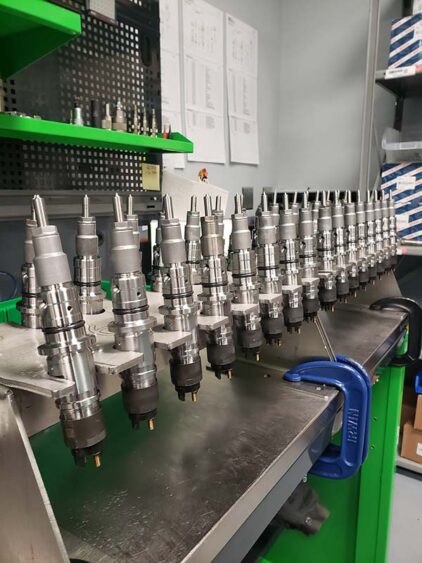
Injector Advancements
Much like anything in the automotive world, technology in vehicles today stems from the OEs. In the light-duty diesel segment, OEs have been making a push to make injectors physically smaller, able to withstand higher injection pressures, and have increased precision on fuel delivery quantity and timing, all while maintaining or reducing manufacturing costs.
According to the folks at Exergy Performance, on the racing side, there has been more changes to injector nozzle specs to accommodate increased flow, different number of holes, spray angles, and higher injection pressures.
“As the nozzle specs change and drift further away from OE, the internal components inside the injector also need to change to maintain precise control of the injection event – at the beginning of injection, at peak injection rate and end of injection,” says Exergy’s Jordan Harkema.
Lately, Exergy has emphasized ensuring injector product quality by adding new state-of-the-art equipment to modify and test products and apply even tighter process controls.
“On our higher-flow injectors, we continue to optimize spray angles and number of holes for various applications as the power and rpm demands continue to increase,” Harkema says. “Angle and hole requirements also continue to change as engine builders develop different combustion bowl geometries.”
As each diesel generation makes improvements, they typically come with changes to handle higher rail/injection pressures. This can be seen at the OE level where some OEs went to piezo injectors instead of solenoid injectors.
“This is a completely different injector architecture and also requires a different type of ECU to control those injectors,” says S&S Diesel Motorsport’s Luke Langellier. “Solenoid injectors operate on a basic principle of energizing a coil – very precisely – to create an electromagnet, to then move a small pilot valve. Piezo injectors utilize a piezo crystal stack that gets energized/charged, and in turn, grows ever so slightly, which presses on a tiny valve to create movement inside the injector.
“Each injector type operates quite differently and has different electrical control system requirements. Each type has pros and cons, and both are still used in current production. Most high-performance applications are utilizing solenoid-type injectors. However, we do have many piezo performance injectors and are continuing to push the limits with them.
“Honestly though, after those early generations of fuel systems, the injectors have been fairly reliable. Bosch did a great job with many of the injector designs the last several years, both solenoid and piezo style. While we offer many different sizes of replacement injectors for the different generations, they are primarily based on the original design.
“Quite a bit of our focus recently has also been on next level competition injectors. We have designed custom nozzles along with many proprietary other injector modifications, which have enabled extremely high rates of fuel delivery in a very short window of time. This has enabled new horsepower records in pulling truck engines as well as next-gen engine performance from high rpm drag engines.”
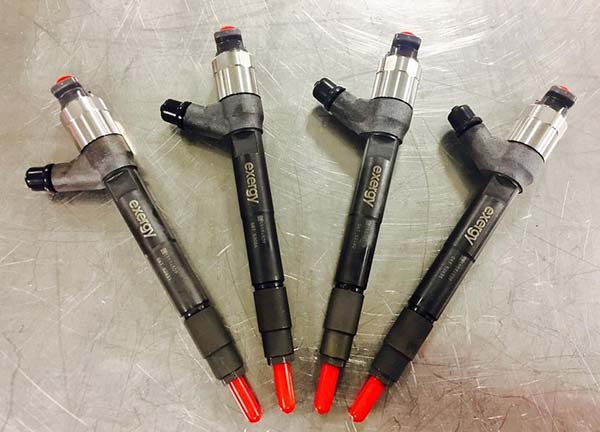
Injector Type
As indicated, injectors are not one size fits all or one single style. Depending on the engine, the application, the performance level, and several other factors, the type of injector that is right for you could differ. The three primary styles of injectors are HEUI, mechanical and common rail, and all three are still heavily used today. But, has one style risen above the others?
“Cummins, Powerstroke and Duramax injectors differ not only from one another, but from one generation to the next of each respective platform,” Harkema points out. “The most notable difference is the physical envelope that the injector body fits within. Cummins utilizes a side-feed injector design, which requires the use of feed tubes, which are separate from the injector. Duramax injectors are a top-feed design and do not require the use of feed tubes. Since 2011, the Powerstroke engine has utilized a Bosch piezo injector. The LML Duramax (2011-2016) utilized this same type of injector. These piezo injectors have fewer internal moving parts than a traditional solenoid-type injector and were a big step forward in injection rate control when introduced.”
Before Exergy Performance went into business in 2006, the founding partners had worked for Bosch helping develop and apply the common rail systems that went on the Duramax and Cummins 5.9L platforms.
“Since our background and proficiency was in common rail, and we saw it as the dominant system for the future, we decided to focus on only common rail products in the aftermarket,” Harkema says. “Consequently, we only work with common rail systems, which has been the mainstay of OE diesel fuel systems for nearly 20 years at this point.”
That said, there are still niche markets for HEUI and mechanical systems. The suppliers of these parts also continue to make improvements to stay competitive, and one such shop is Warren Diesel Injection.
“Warren Diesel Injection produces 100% HEUI injectors,” says owner Jesse Warren. “For the 6.0L Powerstroke specifically, in higher elevations, you need to typically run smaller nozzles than you think for your application. As you are looking for more horsepower, boost, nitrous, and fuel pressure, you will want to run a larger injector and nozzle to keep up with your fuel needs. All of which require a larger turbo, fuel system, etc.”
While Warren Diesel is one shop keeping HEUI injectors alive and well, the folks at S&S are also solely focused on common rail injectors as, like Exergy, it aligns with the company’s engineering background at Bosch and Cummins.
“When it comes to common rail, we only produce and support what we are the most experienced and confident with, and there’s no doubt that common rail is the last couple decades worth of production, and it is the future,” Langellier says.
Luke also weighed in on the similarities and differences in OE injectors from the big three. He says, “while the shape of the injectors used in some engines may look significantly different, the overall operation and design may be very similar. Bosch was the OE fuel system supplier for all of the big three. They’ve got slightly different lengths to fit the different cylinder heads, but the injectors are very similar. That said, each generation of engine often has different nozzle hole count and spray angle to match a particular piston bowl. This is a very highly studied interaction at the OE level to hit the requirements for power, emissions compliance and fuel efficiency.”
That same studied interaction is happening in the aftermarket too. Companies like Exergy and S&S are constantly adapting injectors to the specific needs of customers and the applications they run in.
“For applications that are not air limited, injectors are sized based on the desired peak horsepower target,” Harkema says. “The goal is to get enough fuel to achieve the power target injected in roughly the same amount of time/pulse width as the original injector. If pulse widths get extended too far, EGTs increase as fuel is injected too late in the expansion/power stroke. As boost levels and amounts of nitrous increase, there is more oxygen available to support combustion. Consequently, more fuel can be injected to help achieve desired power goals.”
In scenarios where you have increased elevation, this reduces the amount of oxygen available and has the opposite effect, according to Harkema.
“The higher the injection pressure the higher the rate of injection and the shorter the pulse width needs to be to inject the same amount of fuel,” he says. “Consequently, increasing injection pressure can be used in place of a slightly larger injector. Any increase in injection pressure will reduce the durability of the entire high-pressure fuel system. However, to the degree this reduced life span is acceptable, this strategy can be used to get more fuel into the combustion chamber. Increasing injection pressure also makes more energy available to atomize the fuel and typically provides a slight increase in efficiency, which extracts even more power out of the injected fuel.”
All of the above items also apply to air limited applications commonly found in truck pulling. However, there is also a need to provide additional fuel to help manage EGTs. In these applications, enough fuel needs to be injected to take full advantage of as much of the available oxygen as possible.
“This requires that they run extremely rich, which causes EGTs to be detrimentally high,” he says. “To reduce these EGTs, the engine is essentially over fueled even further to provide a ‘cooling effect.’ The ability to provide this additional fuel is also part of the total flow requirements of the injector.”
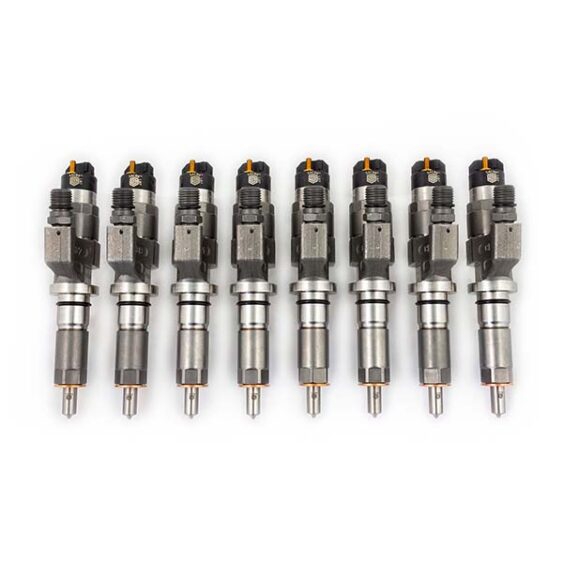
The primary driver for the base injector type is what type of engine it is and what will fit in the cylinder head. Within a certain engine, however, injector modifications are driven by horsepower requirements and combustion recipes.
“The injected quantity of fuel needs to match the engine and air system with how much oxygen there is to burn that fuel,” Langellier says. “And, the nozzle spray angle and hole count need to match the piston bowl, cylinder head swirl, and overall combustion system to perform at its best. The beauty of a common rail fuel system is that the fuel quantity, injection timing, and injection pressure are infinitely adjustable. Once you have a base injector design, you still have many other levers to pull to dial it in.”
Selecting Injectors
If you’re looking for the best ways to select an injector that’s right for you or for a customer, the first course of action is always to understand your goals, or to get the customer to tell you what they want to do with their truck/engine combo.
“Ask yourself, what is it I’m looking for?” Warren says. “Do I want better fuel economy, more horsepower, more low-end torque, etc? Other things to consider are, do I want to upgrade my turbo and/or fuel system? Another thing we need to know is what upgrades you have done to the truck. If you have already upgraded your turbo and/or fuel system, a larger injector may be appropriate for your application. One of the more common mistakes is not pairing the correct size injector to the turbo size.”
Aside from the customer, a tuner is another great resource for understanding what injector might be best for the engine.
“The best advice for injector selection typically comes from the tuner,” Harkema notes. “They have experience marrying the engine, fuel system, available air and the intended vehicle use to produce winning results. As fuel system manufacturers we can make general injector recommendations, but we typically tell customers to work with their tuner for the final selection. Most of the time, people who report unsatisfactory results have an injector that they selected themselves and is not optimal for their application, or they did not get adequate tuning support.
In general, bigger is not always better. Most of the time, the best injector selection is the smallest injector that will support the power target. This reduces the amount of tuning required to optimize drivability.”
Some of the biggest misconceptions are related to the overall quality of injectors. Most people only know they need a replacement set of injectors for their truck, but don’t realize there is a huge difference in the injector offerings on the market. If you search for a set of injectors for a given year and engine, you’ll still have dozens of options with wide ranges in price. Injector options on the market range from tested cores, all the way up to brand-new Bosch-based injectors that are built and balanced to even tighter than Bosch specs. In the middle are many different “house brands” of reman injectors.
“That’s why S&S Diesel Motorsport only uses the absolute highest-quality base injectors available – either a new Bosch or genuine Bosch reman injector,” Langellier says. “Then, we build them to our spec even tighter than Bosch’s and run them across our test benches to ensure the highest quality. Many injector sellers don’t have the ability to test injectors, so troubleshooting issues is a challenge and after sale support is subpar. These injectors live under pressures of 30,000-40,000 psi and actuate millions to billions of times, so the precision, coatings and machining quality is very important.”
And when it comes to injector nozzles and the various elements involved there, manufacturers say the evolution is a never-ending process.
“Nozzles vary from application to application in the same way they traditionally have in regard to the number of holes, spray angle, and distance to the vertex of the spray holes,” Harkema says. “Trying to reoptimize these parameters for various combustion chamber designs that are continuously evolving in the aftermarket is a never-ending process for injector suppliers.”
Injector Failures
With injectors being an engine component under extreme pressure, extreme heat, and needing to function millions and billions of times within an engine, failures are bound to happen, especially when you consider that just about everything that touches an injector is trying to break it, including the fuel itself.
“If a failed injector on a 6.0L happens right away, one of the most common reasons is installation error,” Warren says. “If you do not torque your injectors down to the appropriate specs, you will blow the copper washer and the injector will not run properly. If this happens, you can replace the copper washer yourself and reinstall at the correct specs.
“If you have an injector failure later down the road, lack of maintenance and low-quality oil can be common culprits. It is important to perform regular oil changes on your 6.0L diesel with a high-quality oil.”
Along with changing your oil and ensuring your fuel is good, clean fuel, another common reason for premature injector failure is debris.
“This can be debris that somehow gets in during installation, or the result of inadequate filtration,” Harkema says. “The debris can either cause an immediate problem or induce a failure over several thousand miles. It only takes a grain of sand to render a high-pressure common rail system inoperable. Most trucks have been in service for years and have been driven thousands and thousands of miles. Consequently, there are a lot of fuel system ‘hazards’ in the engine bay that can cause trouble.
“Based on this reality and the general state of cleanliness of some shops, debris failures are inevitable. Our advice is to never cut corners on cleanliness when trying to prevent debris failures at install. We recommend filtration down to 2 micron, if possible, and preferably not higher than 5 micron. Adhering to these guidelines and regular filter maintenance will minimize the possibility of debris wear damaging the high-pressure fuel system over time.”
Another common issue with injectors that stems from fuel is water in the fuel causing rust to form inside the injector.
“The best preventative measures against this are quality fuel sources, maintaining water separators and using a fuel additive formulated for both water disbursement and corrosion protection,” he says. “The next two most common injector failures are due to fuel deposits and component wear. Again, good fuel and an additive formulated to prevent deposits and increase fuel lubricity go a long way to preventing these types of failures.”
The folks at S&S agree that fuel contamination from water, DEF, or gas in the tank, or from poor filtration – likely from cheap aftermarket filters – are among the most common failure causes. But, injector feed tubes should also be taken care of.
“Take care when re-using injector feed tubes on Cummins engines,” Langellier says. “Burrs can develop at the tip after several retorques, which can break off and damage an injector. The same can be said for low-quality, off-brand, feed tubes. We recommend using new Bosch feed tubes with every injector install.
“We also sometimes see failures from overpressure in the rails, or excessive restriction on the injector return flow circuit back to the tank. Pressure relief valves are needed to protect the injectors from high-pressure spikes during tip out. Some companies make rail plugs to eliminate the pressure relief valve when running higher rail pressure. While this is one way of achieving a higher-pressure capability, it also exposes the injectors to pressure spikes. Instead, S&S sells modified pressure relief valves that open at higher pressures to increase overall rail pressure capacity, yet protect the injectors from extreme spikes. We also sometimes see failures from overpressure in the rails, or excessive restriction on the injector return flow circuit back to the tank.”
An important thing to note is that if you suspect you have injector issues, companies like S&S offer testing services so you don’t have to guess or just throw parts at the problem.
“We can test the injectors for you to determine if the symptoms the vehicle is having can be explained by the injector (or pump) performance,” Langellier says. “If there is a fuel system problem we can then advise on if it is repairable or not.”
Conclusion
Injectors and the fuel systems of these diesel engines have undoubtedly played an enormous role in the great performance of diesel engines today. Those performance gains aren’t done yet, so where do manufacturers see injector technology going next?
Some expect to see cleaner burning injectors and no haze in the future, while others expect higher pressures, even more precise fuel delivery, higher fuel quantities, and even more nozzle design flexibility.
When it comes to competition and racing, manufacturers will continue to push the limits on injection rate, shape and pressure capability, in order to deliver huge amounts of fuel in very short and precise shots for efficient combustion. EB

